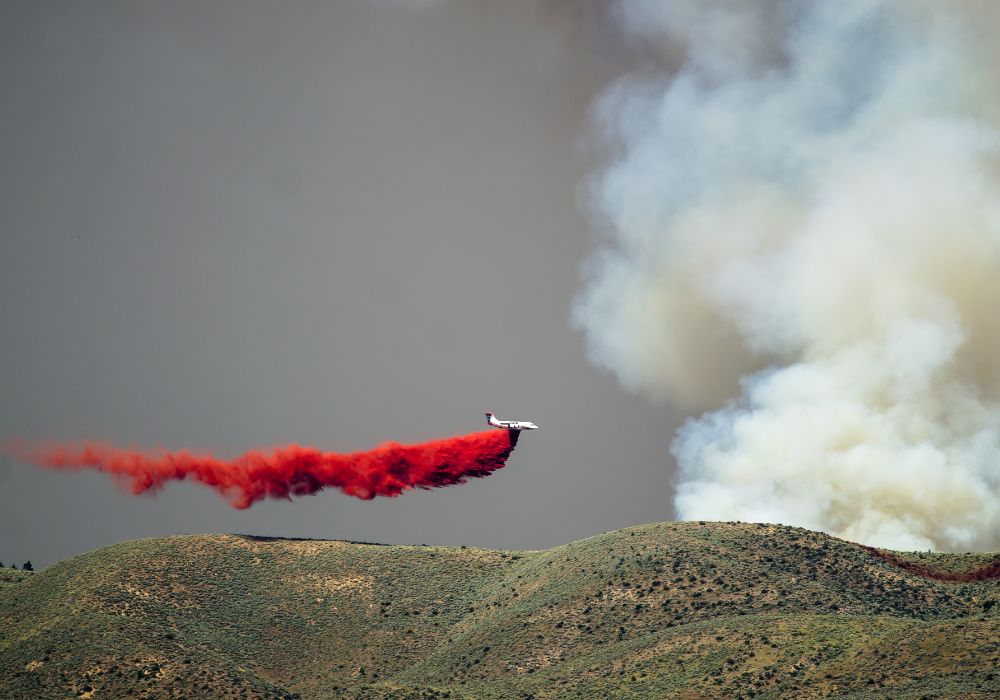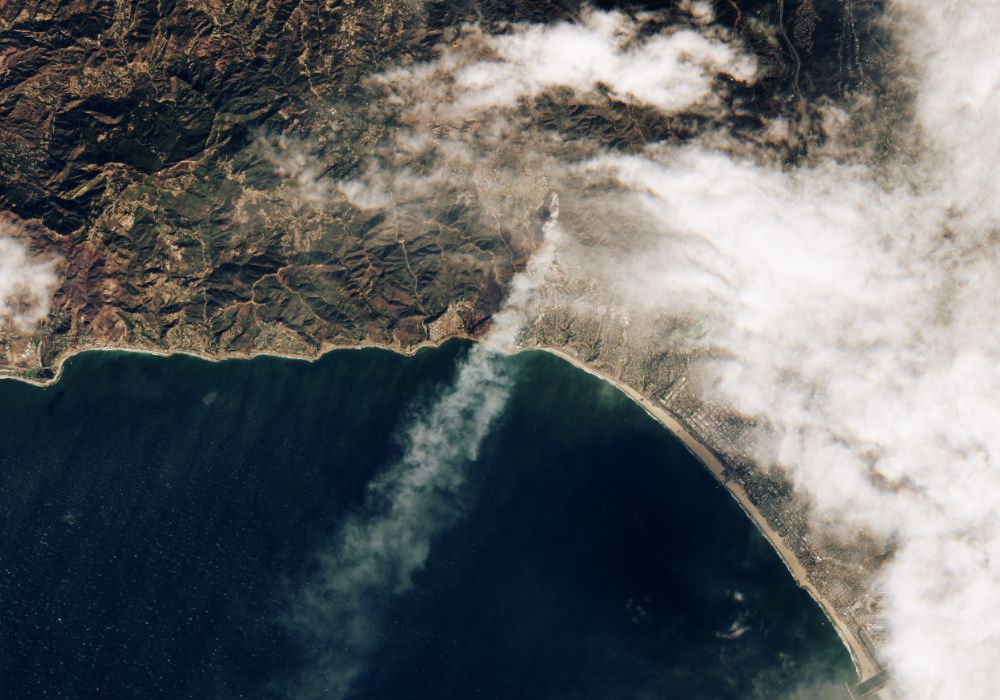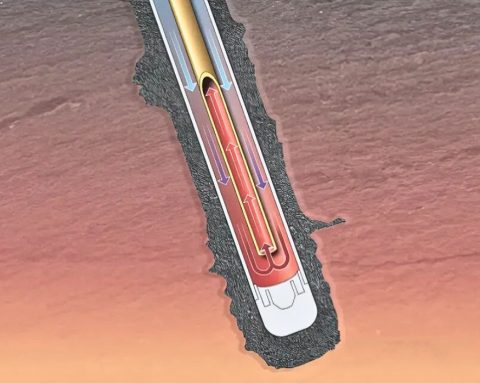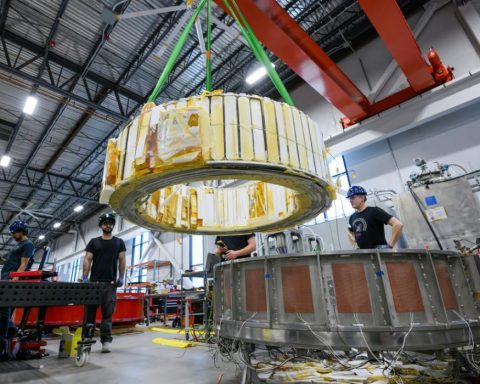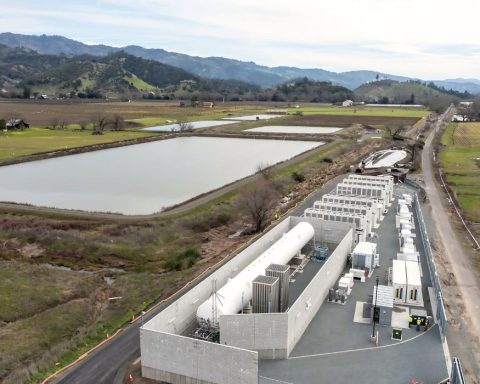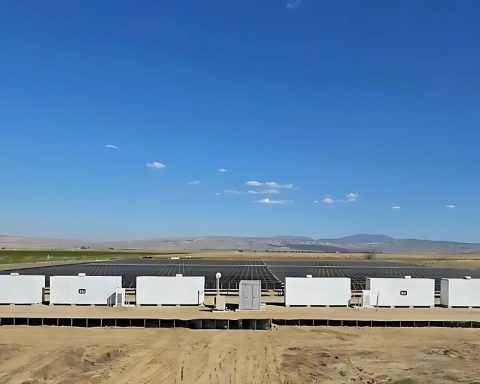Unprecedented in size, intensity and impact, the wildfires that tore through Canada’s boreal forests in 2023 razed just over 4% of Canada’s forested lands. Early snowmelt and so-called flash droughts converged to fuel blazes that burned some 15 million hectares, an area nearly the size of Florida and more than seven times the historical average. More than 230,000 people from more than 200 communities were evacuated, and eight firefighters died.
Fires have traditionally burned an average of 2.5 million hectares of land in Canada yearly. But the 2023 fires were unusually large and widespread: by mid-July, 29 megafires, each exceeding 100,000 hectares, left a trail of destruction across the country. Canada released 647 megatons of carbon that year, generating approximately 31% of the global emissions from wildfires.
This year, wildfires swept across northern Manitoba and Saskatchewan. Smoke permeated the atmosphere in central Canada, the Great Lakes region and the northeastern United States, compromising air quality and reducing visibility in major cities.
Looking not too far into the future, the amount of forest burned by wildfire is projected to double as a result of a changing climate.
“A warming planet is contributing to longer fire seasons,” says Mike Flannigan, professor of wildland fire at Thompson Rivers University. “Alberta’s fire season used to start in April. Now we’re seeing fires in March and February. The warmer the planet gets, the more lightning we expect. And the atmosphere gets more efficient at sucking moisture out of vegetation, the fuel for fire. The drier that fuel on the forest floor is, the higher the intensity of the fire, which is difficult to impossible to extinguish.”
Given the new reality, the burning question is how can Canada be better equipped to battle blazes that have increased in intensity and size, especially in the boreal forests?
Fight smarter with precision tech
Earlier this year, the federal government announced a new wildfire-fighting initiative called WildFireSat, which will be the first government-owned satellite mission specifically designed to monitor all active wildland fires across Canada on a daily basis.
Spending money on more resources to extinguish larger fires is a waste. You want to get the fire at the start. That’s where the investment needs to be.
– Mike Flannigan, wildland fire expert, Thompson Rivers University
Set to launch in 2029, seven microsatellites will feed the tracking information back to fire-management authorities. The data is intended to help those on the front lines identify high-risk wildfires and deploy resources and crews more strategically.
In recent years, start-ups have been testing a variety of tools to aid in battling forest fires. One company, Pano, makes AI-enabled cameras to spot wildfires; another called Rain has been piloting autonomous helicopters to douse them. Others have developed satellites and drones to monitor forests and weather.
Flannigan explains: “Say we’ve got 100 new fires. Which ones do we fight? What if we’ve only got enough resources to fight 20? Which are the important ones to fight, and which are the ones we can deal with later or just let Mother Nature run her course? Using machine learning helps make an informed decision when faced with that kind of situation.”
In a related effort, researchers at the University of British Columbia’s Okanagan campus and B.C. Wildfire Service, the province’s wildfire-suppression service, have formed a partnership to develop a provincial wildfire camera network. Using 5G technology, the cameras detect smoke from wildfires and share real-time data to support evacuation planning, resource deployment and wildfire behaviour predictions.
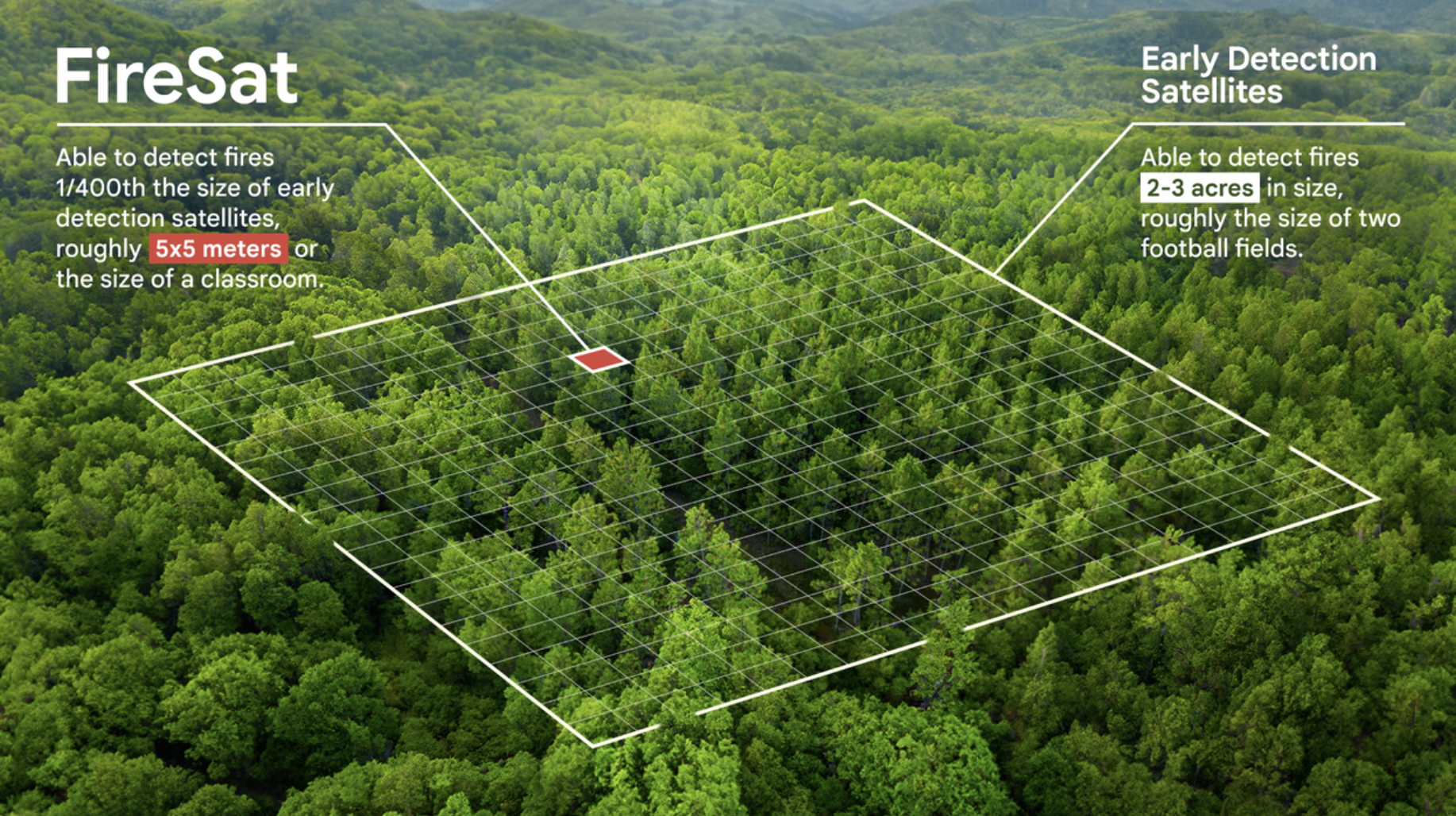
The Washington Post reports that, since 2023, more than 100 new wildfire-related technologies have launched in the United States and around the world. Many employ artificial intelligence in wildfire detection, such as FireSat, an initiative undertaken by the non-profit Earth Fire Alliance, with funding from Google and the Moore Foundation. Drawing on “high-res multispectral satellite imagery,” FireSat is designed to feed updates in 20-minute intervals to first responders, citing the location of active fires. The data will be accessible through phones, tablets and laptops. A prototype was deployed in March this year.
For now, though, firefighters mainly rely on people to alert them of a wildland blaze. To facilitate reporting, some provinces have created apps specifically to call in a fire. B.C. Wildfire Service’s mobile app features a “Report a Fire” function that automatically generates the coordinates of a fire’s location and sends them directly to the closest fire-management agency.
The high cost of forest fires
Economic losses due to forest fires are significant and likely to rise if current fire trends continue. Assistance funds now average about $340 million per year; in 2016/2017 and again in 2020/2021, the Disaster Financial Assistance Arrangements program paid $1.7 billion in assistance. (According to a government media release, WildFireSat is expected to save the Canadian economy between $1 billion and $5 billion over its first five years of operations.)
The 2016 wildfire in Fort McMurray, Alberta, is considered the costliest natural disaster in Canadian history at an estimated $9 billion in direct and indirect physical, financial, health and environmental impacts.
Equally alarming are the health impacts of smoke inhalation. Research suggests that as many as 1.5 million people die globally every year as a result of wildland fire smoke. Even short-term exposure is detrimental as it can lead to bronchitis, worsen asthma and create other health problems, as reported by the U.S. Environmental Protection Agency.
And there is the environmental cost, which itself contributes to worsening the main cause behind bigger, more frequent wildfires: a warming planet. Boreal forests have historically helped to slow climate change by storing carbon as trees grow rather than adding carbon dioxide to the atmosphere. Forests absorb approximately a quarter of global carbon emissions.
With forest fires burning more than twice as much tree cover as they did 20 years ago, this vital carbon sink is shrinking.
The window of opportunity
Canada has been warming at about twice the global rate. Average temperatures in 2023 between May and October were 2.2°C above the norm over the previous 30 years and were largely responsible for the unusual weather patterns that fuelled the fires. Which is all to say that wildfire season will continue to last longer and burn more fiercely than before.
Flannigan believes fire-management plans should prioritize quick and early containment of wildfires to realize the highest return on investment. “Every fire starts small, whether it’s a campfire or lightning strike. That’s our window of opportunity,” he says. “Spending money on more resources to extinguish larger fires is a waste. You want to get the fire at the start. That’s where the investment needs to be.”
Read more of our wildfire coverage
Flannigan also highlights the importance of establishing a centralized agency solely dedicated to addressing natural disasters. “[Canada needs] an agency like the U.S. Federal Emergency Management Agency to deal at the national scale with floods, earthquakes, hurricanes and fire,” he says, noting that each province and territory devises its own fire-management plan and may not be in a position to share resources when a neighbouring region requires extra support.
Most Canadians agree that such an agency should be created. Recent polling conducted by Abacus Data shows there is overwhelming support for a national forest-firefighting unit. As Flannigan succinctly observes, “We live in a flammable environment.”
Victoria Foote is a writer and editor who specializes in clean energy and climate.
The Weekly Roundup
Get all our stories in one place, every Wednesday at noon EST.


